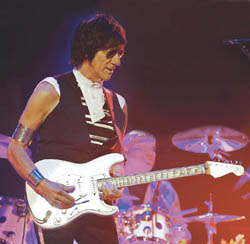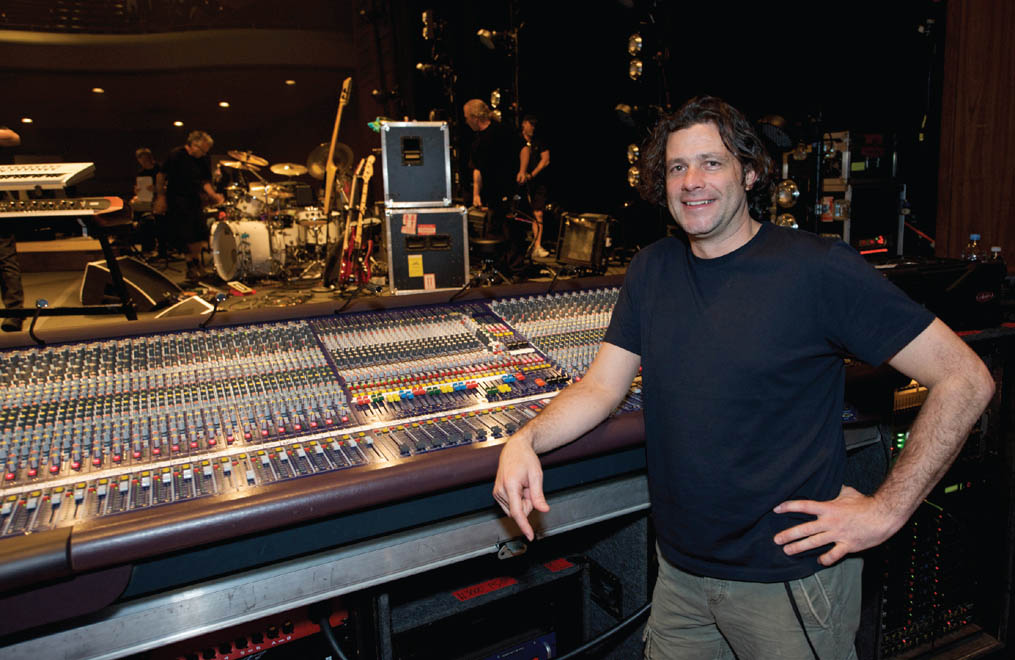
Best Results
“This tour has been a bit of a revelation for me,” Findlay notes. “Engineers are instinctively conservative in their mic choices, and when you find a set that works, you tend to stick with it.”
“However, we’ve put together a mic package that is giving the best results I have ever known in the live environment.”
Though the show is primarily instrumental, the vocal mics are all Audix OM7. “I’ve had more compliments about my sound on this tour than I can ever remember!” he says.
“A coincidence? Probably not.” Findlay adds that he’s looking forward to using his mic package in the studio in the near future.
A single Radial J48 DI is the input for Rhonda Smith’s two basses into the stage rack, and Findlay then double patches that input to two channels in the Profile – one set for the her electric Fender Jazz Bass and the other for the pickup on the upright bass.
“I EQ using the console’s onboard processing, but for the Jazz Bass I have a Summit TLA-100 tube leveling amp inserted across the channel to control the pops when she slaps the bass,” he explains. “I found that if I ran the channel at a good operating level for the main bass program, when she slapped the bass, it would peak the channel’s input.
“This was resolved by setting the input gain on the channel so it didn’t peak when she slapped the bass, then inserting the TLA-100 over the channel and setting the compressor so there’s no more than a -3 dB deflection during normal bass program,” Findlay continues.
“Then I set the gain make-up so it runs back into the insert return at a normal level. I found that when Rhonda slapped the bass, the pops were leveled out.”
On her upright bass, he’s using a Bomb Factory LA-2A plugin. Both basses need a little taming at the top end, but he does this on a song-by-song and venue-by-venue basis. An Audix D6 is applied to one of Smith’s four Mesa double-15 bass cabinets.
“I have two iLoks I carry with me,” Findlay adds. “One has the Digidesign Massive Pack on it, and I carry this for emergencies, in case the one supplied gets lost or broken and there’s a needed plug-in not authorized on the system I’m supplied with.”
He has another with has a bundle of Sonnox licenses. “The main elements I use are the EQ with the GML algorithm and the Inflator,” he says, with the latter being one of his secret weapons.
“It’s very useful for adding sheen and detail to elements of the mix, or even the whole mix.”
Pairs On Stage
Monitor Engineer Shon Hartman is a veteran of Pearl Jam and The Offspring, among others, and he mixes on a Midas Heritage 3000 console with a TC Electronic EQ Station, and has an outboard package comprised of Drawmer DS201 gates, dbx 160A compressors and a pair of Yamaha SPX-990 effects units.

The band relies on d&b audiotechnik double-12 monitors except for keyboard player Jason Rebello, who uses a stereo pair of d&b M4 single-15 co-axial wedges to back up his Sennheiser G3 IEMs.
Side fills are pairs of L-Acoustics ARCS with dV-DOSC subwoofers, and Walden’s drum mix is another ARCS 2-way enclosure augmented with a third dV-DOSC sub and a Buttkicker.
Beck plays a run of U.S. dates, including Bonnaroo in Franklin, Tennessee in June, before the “Emotion & Commotion” tour heads to Europe in July for the summer.
Walden will also be putting on his music director’s hat on May 13 for Sting’s Rainforest Concert at Carnegie Hall. Check out last year’s “Live at Ronnie Scott’s” DVD, with the version of the Beatles’ “A Day in the Life” winning Beck a Grammy.
Mark Frink is Editorial Director of Live Sound International.

